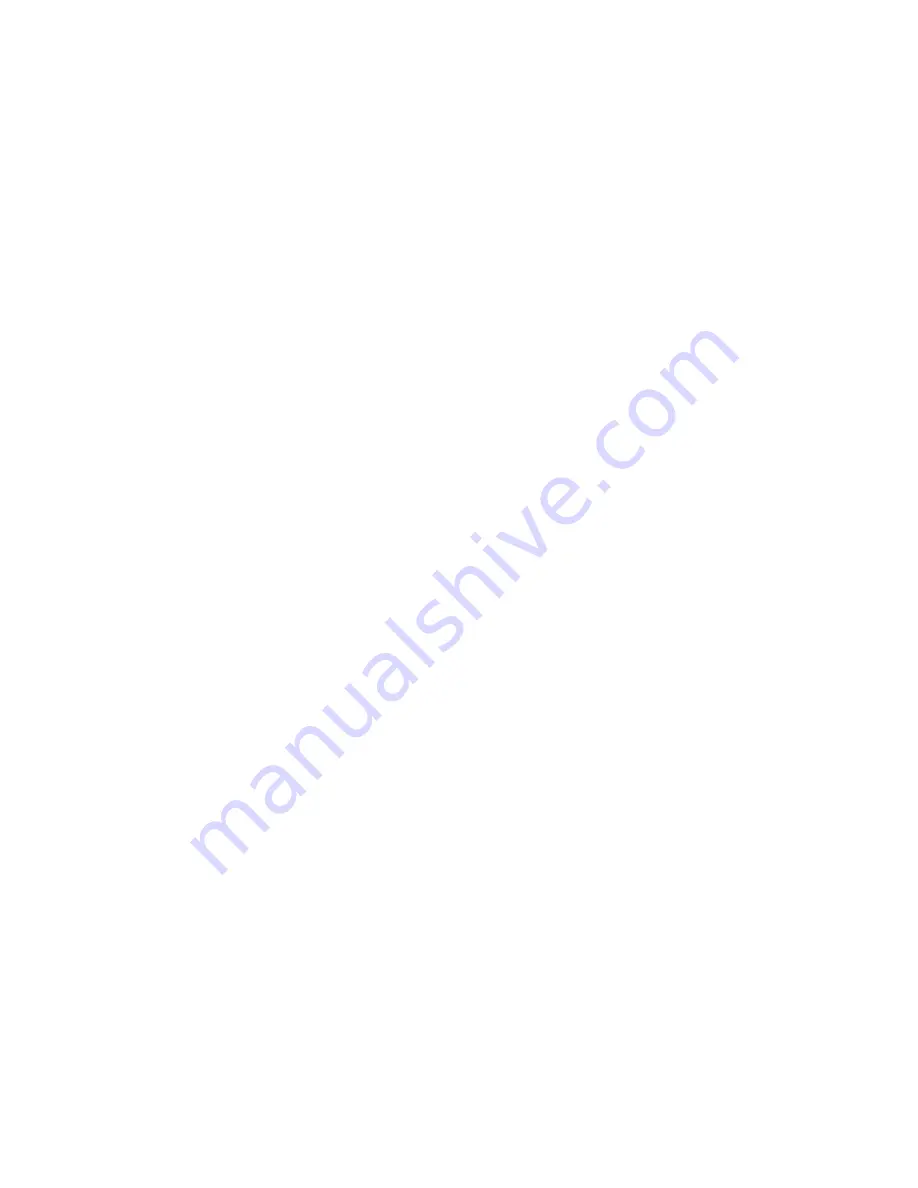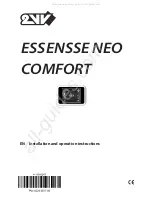
Version: 010905
ShowCase 3264 MANUAL Page 7 of 12
1 = RIGHT/LEFT (normal/reverse)
2 = LEFT/RIGHT (normal/reverse)
3 = RIGHT
4 = LEFT
5 = DOWN/UP (normal/reverse)
6 = UP/DOWN (normal/reverse)
7 = DOWN
8 = UP
9 = CURTAIN OPEN/CLOSE (normal/reverse)
10 = CURTAIN CLOSE/OPEN (normal/reverse)
11 = CURTAIN OPEN
12 = CURTAIN CLOSE
13 = BOX OUT/IN (normal/reverse)
14 = BOX IN/OUT (normal/reverse)
15 = BOX OUT
16 = BOX IN
17 = GRID OUT/IN (normal/reverse)
18 = GRID IN/OUT (normal/reverse)
19 = GRID IN
20 = GRID CLOSE
21 = RANDOM SQUARES
EFFECTS
The EFFECT key enables or disables the current effect mode on all selected M/Es. If the effect mode is already
enabled on any selected M/E, all are disabled, otherwise all are enabled. When an effect mode is enabled on any
selected M/E, the EFFECT key lights. An effect is changed by entering a new effect number on the KEYPAD,
pressing STORE, and pressing the EFFECT key; the new effect is set on all selected M/Es. The available effect
modes are:
1 = WINDOW (PICTURE-IN-PICTURE) allows PST video to be superimposed on PGM video in window form.
1 = WINDOW (PICTURE-IN-PICTURE)
When effect 1 is enabled, the picture on the preset monitor changes to a window. When disabled, the PST
video changes back to full size. After effect 1 is enabled, and until it is disabled or the SETUP, CLEAR, or
UNDO keys are used, the window can be sized and positioned using these KEYPAD keys:
5 = SIZE moving FADER adjusts the window size. Positioning is adjusted if required to achieve size.
0, 2, 8 = VERTICAL POSITION moving FADER moves window vertically.
1 = DIAGONAL POSITION moving FADER adjusts position diagonally from lower left to upper right.
3 = DIAGONAL POSITION moving FADER adjusts position diagonally from lower right to upper left.
4, 6 = HORIZONTAL POSITION moving FADER moves window horizontally.
7 = EQUIDISTANT moving FADER adjusts window to keep equal distance from lower right or upper left.
9 = EQUIDISTANT moving FADER adjusts window to keep equal distance from lower left or upper right.
When the window effect is selected, a subsequent transition superimposes the PST video over the PGM video
in window form. When the effect transition is completed, the PST input flip/flops to become the PGM video,
although both inputs actually contribute to the program output. If a new input is PST while a window is
superimposed on the PGM output, it is not routed until the window is removed with another transition, at which
time the route and input register recall is performed to ready for another transition. Pressing the EFFECT key
while the window is visible on the PGM output performs an AUTO TRANS to remove the window, after which
the input is changed back to full screen.






























